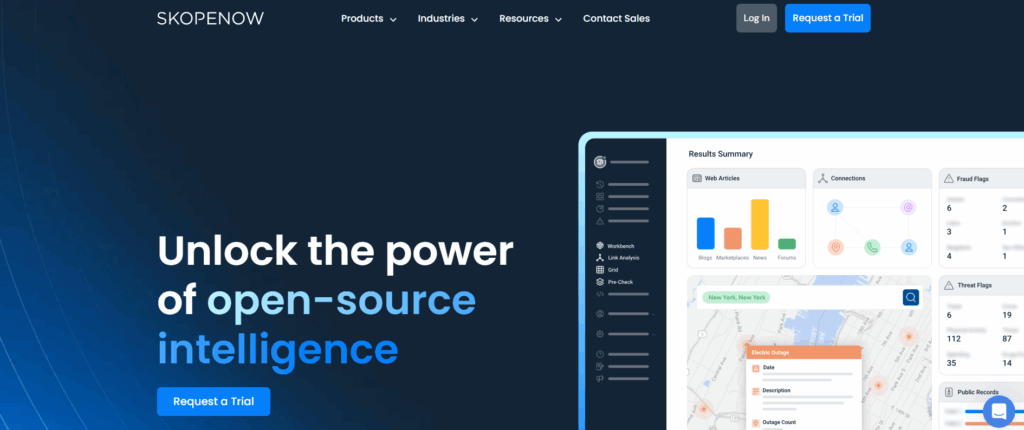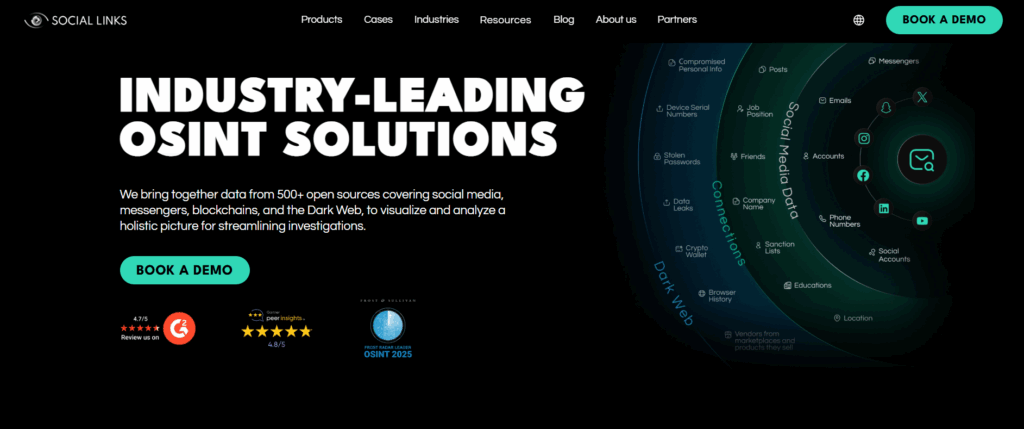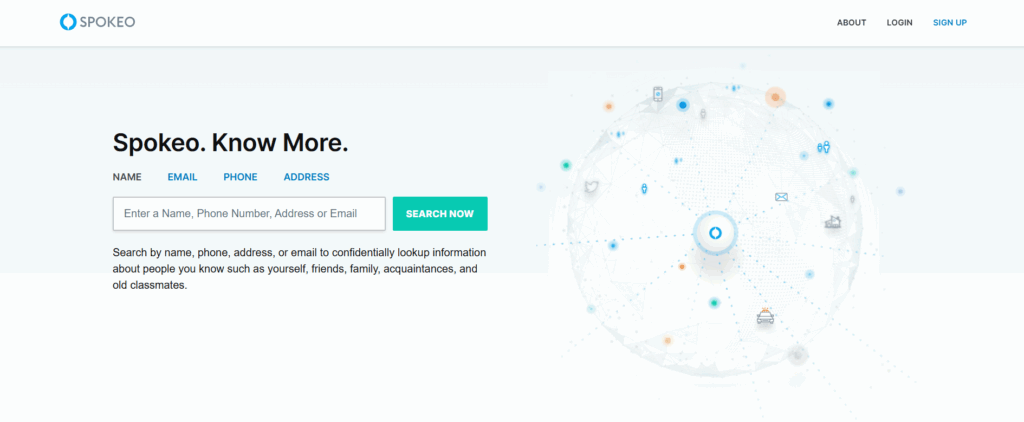OSINT username searches turn online handles into investigative leads. A single username can connect an individual or organization to profiles, posts, and activities across multiple platforms — from social media and forums to online marketplaces.
For analysts, journalists, and security teams, investigating usernames is a way to uncover relationships, verify identities, and trace digital activity. It’s about more than finding where a name appears; it’s about linking patterns, cross-referencing other identifiers like emails or phone numbers, and building a clear picture from scattered public data.
In this guide, we’ll explain how username OSINT works, why it matters, and the tools that can help make the process faster, deeper, and more accurate.
What is OSINT Username Search?
An OSINT username search is the process of investigating a specific username or handle to discover where it appears online and what information is linked to it. The term “OSINT” stands for Open-Source Intelligence, which means the data comes from publicly accessible sources rather than from private databases or hacking.
When someone uses the same or similar username on multiple platforms, those accounts can be connected to create a fuller picture of their online presence. Even small details, like profile pictures, posting habits, or writing style, can help confirm whether accounts belong to the same person.
This kind of search is useful because usernames often stay consistent over time. While people might change their email address or phone number, many keep the same handle for years, especially on hobby forums, gaming platforms, or social media. That consistency makes usernames a strong starting point for investigation.
However, the process goes beyond typing a name into a search engine. Analysts often check dozens or even hundreds of websites and platforms to see where a username appears. They might then cross-reference the results with breach data, domain registrations, or archived pages to find connections that aren’t immediately obvious.
Used correctly, OSINT username searches can uncover valuable insights for cybersecurity teams, law enforcement, journalists, and businesses. But they also require careful verification to avoid false matches, since popular usernames may belong to different people on different sites.
Why Username OSINT is Important
Investigating usernames might sound simple, but it can have a major impact in fields where accurate identification matters. For cybersecurity teams, tracking a username across platforms can be the first step in uncovering a phishing campaign or detecting an impersonation attempt. If a threat actor is posing as a company representative, finding other accounts linked to that same username can help security teams take action before damage is done.
In fraud investigations, usernames often act as threads that connect seemingly unrelated activities. A scammer who uses the same handle to advertise fake products on one site might also use it to communicate with victims on another. By following that trail, investigators can map the scope of fraudulent activity and sometimes identify the person behind it.
Journalists and researchers also rely on username OSINT to verify information and confirm the credibility of their sources. In high-stakes reporting, being able to link a username to a history of posts, comments, or other accounts can help confirm whether someone’s claims are legitimate.
Businesses use these techniques for brand protection and due diligence. If an unknown profile is using a company’s name or logo, an OSINT search can help determine whether it’s an authorized account or a potential impersonator. Similarly, before entering into a partnership, a company might investigate a potential partner’s usernames to see if they’re connected to controversial or fraudulent activities.
In each of these cases, the value lies in connecting pieces of public information into a clear, reliable picture. A single username can open the door to a much larger investigation, and the insights gained can inform decisions that prevent financial loss, reputational damage, or security breaches.
How OSINT Username Search Works
A username investigation usually begins with a single piece of information — the handle you want to research. From there, the goal is to find every place that username appears online and understand how those appearances connect. This process involves more than just typing the name into a search bar. Skilled investigators use a combination of tools, techniques, and verification steps to get reliable results.
The first step is platform scanning. Specialized OSINT tools can check hundreds of websites, social media platforms, and forums to see if the username exists. These scans can reveal obvious matches, like a Twitter or Reddit profile, but they can also uncover less obvious results, such as accounts on niche hobby forums or regional marketplaces.
Next comes cross-referencing. A username on its own might not be enough to confirm identity. Analysts look for other clues — like profile pictures, bio details, or linked websites — to determine whether two accounts belong to the same person. If the username appears in breach data, it might also be tied to an email address or phone number, which can then be investigated further.
Historical analysis is another important step. Even if an account is deleted or renamed, archived web pages, cached search results, or platform-specific history can preserve past activity. This can help establish patterns, such as repeated username changes or linked accounts over time.
Finally, the results are compiled and analyzed. The aim is to see how the username fits into the broader digital footprint of the subject. This could mean identifying relationships between accounts, spotting signs of coordinated activity, or discovering connections to real-world identities.
The strength of a username OSINT investigation lies in layering these techniques. A single match might be interesting, but when multiple data points line up, the picture becomes clearer — and far more actionable.
Best Paid Tools for OSINT Username Investigations
Free tools are useful for quick checks, but paid platforms offer deeper coverage, automation, and advanced analysis that professionals depend on. Here are some of the most effective options for username-based OSINT.
1. Lampyre
Lampyre is built for both quick lookups and in-depth investigations. Its username search scans a wide range of sources, including social media, forums, public records, and breach databases. One of its standout features is link analysis, which visually maps connections between usernames, emails, domains, and IP addresses. Lampyre also integrates both public and commercial datasets, making it a strong all-in-one solution for investigators who need more than surface-level results.

2. Maltego
Maltego is known for its graph-based interface that turns raw data into visual relationship maps. It supports integrations with numerous data sources, allowing you to connect usernames to related accounts, infrastructure, and even physical locations. While it has a learning curve, it’s extremely powerful for complex, multi-layered investigations.

3. Skopenow
Skopenow focuses on automation and scalability. It can run username searches in bulk, pulling related information from social media, public records, and dark web sources. The platform structures the results into ready-to-use reports, making it a good fit for law enforcement agencies, security firms, and corporate investigators.

4. Social Links Pro
Often used alongside Maltego, Social Links Pro extends search coverage to hundreds of additional sources, including smaller social networks and niche forums. It’s especially strong in social media analytics, allowing you to connect usernames to posts, media, and broader account networks.

5. Spokeo
Spokeo is primarily a people-search engine, but it’s useful for username OSINT when you need to connect online activity to real-world identities. It can link usernames to addresses, phone numbers, and other personal identifiers, providing a bridge between digital and offline information.
Paid tools like these not only speed up investigations but also reduce the risk of missing critical connections. For professional work, the combination of data breadth, automation, and visualization often makes them worth the investment.

Free Tools for OSINT Username Search
While paid tools offer more depth, there are a few free options that can be effective starting points. They are especially useful for quick checks or when working on smaller investigations.
1. Sherlock
Sherlock is an open-source command-line tool that scans hundreds of websites to see if a username is registered. It’s widely used in the OSINT community for its speed and coverage. However, it does require some technical knowledge to install and run, which can make it less accessible for beginners.
2. WhatsMyName
WhatsMyName is a community-driven project that works in a similar way to Sherlock, but it’s available through a simple web interface as well as a command-line version. It searches a curated list of sites and can be a quick way to confirm whether a username exists across different platforms.
3. Namechk
Namechk is a user-friendly online tool that checks username availability across social media platforms and domain names. While it’s often used by marketers or brand managers to secure names, investigators can also use it to see where a username is already in use and spot possible impersonations.
Free tools like these are ideal for initial scans, but they have limitations in terms of data depth and verification features. For more complex cases, they’re often used alongside paid platforms to build a complete picture.
Practical Use Cases
Understanding the theory behind username OSINT is important, but seeing how it’s applied in real-world situations makes the value clearer. Investigators, journalists, and businesses use these techniques in very different ways, but the core process is the same — finding connections that help answer critical questions.
Cybersecurity Incident Response
A company’s security team notices a suspicious Twitter account that appears to be impersonating their customer support. Using Lampyre, the team runs a username search that uncovers profiles on Reddit and LinkedIn using the same handle. The LinkedIn profile contains links to a personal blog, which in turn lists an email address. By connecting these dots, the team identifies the impersonator and is able to report the accounts before customers are misled.
Corporate Investigations
An internal security team is looking into a potential data leak. They discover a username mentioned in a leaked forum post that contains confidential company details. By cross-referencing the handle with breach databases and social media profiles using Maltego and Sherlock, they find that it matches an alias used by an employee on a private Discord server. This leads to further investigation and containment of the leak.
Journalistic Verification
A journalist receives a tip from an anonymous Twitter account claiming to have insider knowledge on a political issue. Before publishing anything, the journalist uses WhatsMyName to check for other accounts using the same handle. They find activity on niche community forums dating back years, including posts that match the writing style of the Twitter account. Combined with other verification steps, this helps establish credibility.
Due Diligence for Partnerships
A company is considering a collaboration with an overseas supplier. As part of their due diligence, they investigate the supplier’s usernames. Namechk reveals the username in question is tied to several profiles on industry-related platforms, but also to accounts on consumer complaint forums. This prompts the company to dig deeper before moving forward with the deal.
These scenarios show that username OSINT isn’t just about finding where a handle is used — it’s about building a fuller, verified picture that informs decisions, protects assets, and prevents risks.
OSINT username Limitations & Challenges
Username OSINT is powerful, but it’s not without its drawbacks. Common usernames can lead to false positives, especially when the same handle is used by unrelated people. Some platforms block automated searches or limit public access, which means even the best tools may miss certain accounts. Privacy laws like GDPR and CCPA can also restrict how collected information can be stored or shared.
Because of these factors, investigators rarely rely on a single match. Cross-verification with other identifiers — such as email addresses, phone numbers, or profile photos — is essential to ensure accuracy and avoid mistaken conclusions.
Best Practices for Effective OSINT Username
Successful username investigations rely on thoroughness and verification. Start by using more than one tool — combining sources helps fill coverage gaps and reduces the chance of missing important matches. Always cross-reference usernames with other identifiers, such as emails, phone numbers, or images, to confirm you’re looking at the right person or organization.
Keep detailed records of your findings, especially if the results will be used in legal, corporate, or journalistic work. Documentation ensures that your process can be reviewed and that evidence remains credible. Finally, stay aware of privacy laws in your jurisdiction, and make sure your methods remain within legal and ethical boundaries.
Conclusion
Usernames can act as unique identifiers that link people and organizations to a wide range of online activity. By investigating where a handle appears and what it connects to, OSINT practitioners can uncover valuable insights for cybersecurity, fraud prevention, journalism, and brand protection.
Free tools are a good way to begin, offering quick scans and initial matches. For more complex cases, professional platforms bring broader data coverage, deeper analysis, and time-saving automation. Lampyre is one such platform, combining username searches with link analysis and multi-source integration to help create a complete investigative picture.
Whether you are responding to a security incident, verifying a source, or conducting due diligence, approaching username OSINT with the right tools and methods ensures your results are accurate, actionable, and defensible.
FAQ
It’s used to find and analyze where a specific username appears online. This helps in investigations related to cybersecurity, fraud detection, journalism, brand protection, and due diligence.
Free tools are good for quick checks and initial scans, but they have limited coverage. Paid platforms provide deeper data, better accuracy, and features like link analysis that are useful for complex cases.
Yes, if you’re using publicly available information and following privacy laws such as GDPR or CCPA. The key is to avoid unauthorized access and use the data ethically.
